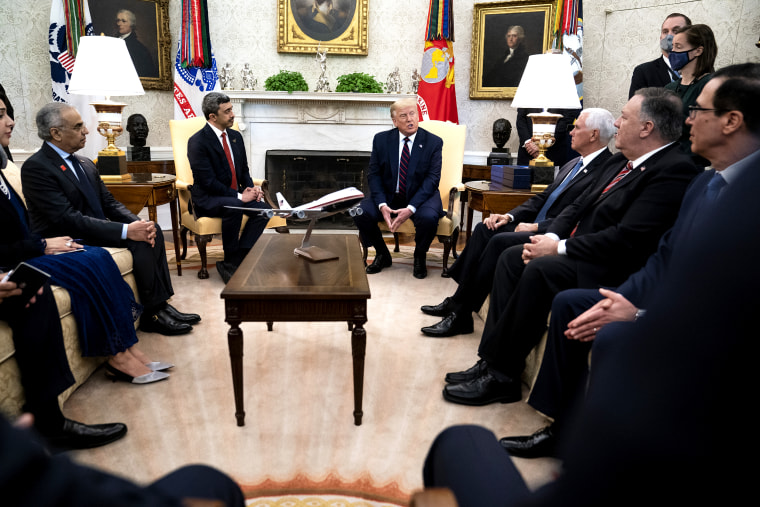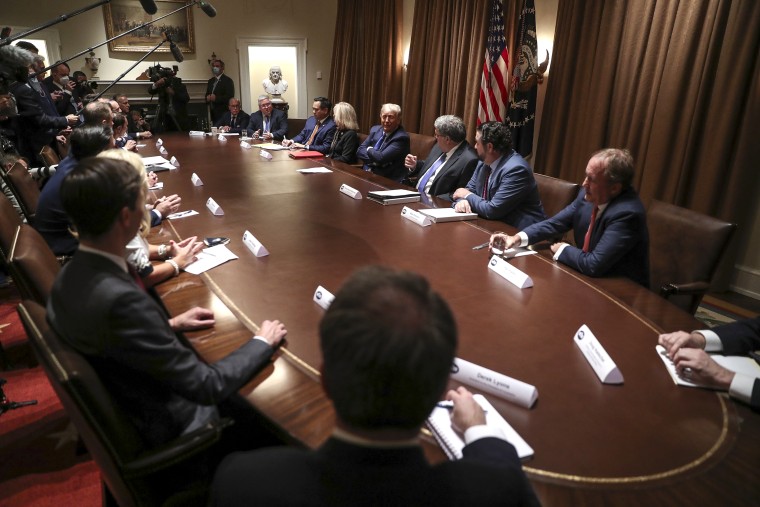Joe Biden is facing a dilemma that no modern incoming president has had to contend with, and it comes on top of the challenges already posed by President Donald Trump's refusal to cooperate in the transition: how his White House team will work out of the building's tight quarters during a pandemic.
Biden's team is brainstorming ways to apply his coronavirus-conscious campaign practices to the presidency, several of his advisers said. Transition officials are trying to determine how — and how many — White House officials can physically work out of the West Wing while maintaining social distancing and other protocols the pandemic requires, the advisers said.
"The entire functionality of the White House is people crammed around desks and huddling at a meeting," a Biden adviser said. "There are going to be adjustments to accommodate for distancing. Folks are going to wear masks."
Already, Biden's advisers have discussed what to do if he ever gets an invitation from Trump for the traditional White House visit before Inauguration Day. And given the multiple coronavirus outbreaks within Trump's White House and inner circle, they determined that it is likely that any such meeting would have to take place outdoors.
The effort to adjust a Biden White House's in-person operations is aimed at ensuring that Biden has quick access to his staff, a necessity for any president, and that aides can seamlessly collaborate on a multitude of crises while operating out of cramped office spaces and ornate conference rooms. It's yet another complicating dimension of a transfer of presidential power that has been anything but typical, with worsening economic and public health crises and a sitting president who won't concede.
"One of the big things to get done over the course of the 78 days is to take a real look at how do we operate safely in the different physical spaces that we're going to be in post-Inauguration Day," a senior transition adviser said.

It's nearly impossible for all White House staff members to be able to work inside the West Wing while maintaining some of the coronavirus safety measures Biden has put in place for his campaign and the transition. The West Wing is a series of small rooms and narrow hallways. Desks are sometimes crammed next to one another, and multiple officials often share windowless offices.
It would be tricky to hold staff meetings in some of the traditional spaces, such as the Cabinet Room, the Roosevelt Room and the Oval Office. Those storied venues offer no room for social distancing when filled to capacity, and there are questions about ventilation.
Even the Situation Room conference rooms are relatively cramped spaces, and adjustments may need to be made for dining in the nearby White House Mess.
Trump White House officials continued to fully staff the West Wing through much of the pandemic. Very few officials wore masks, and the sizes of meetings weren't scaled back to allow for social distancing.
The White House experienced several outbreaks of the coronavirus. More than 40 West Wing aides, administration officials, Trump campaign staff members, lawmakers and others linked to events at the White House have contracted the coronavirus since October, when the president, his wife, Melania Trump, and their teenage son tested positive. Since the Nov. 3 election alone, at least six White House staffers have tested positive, including chief of staff Mark Meadows.
The Biden team, in contrast, stopped working in person at its Philadelphia campaign headquarters in March and never returned to full capacity. Many staffers worked from home, and those who did report to offices were spaced out in large rooms with plexiglass dividers. The Biden transition team similarly functions with most staff members working remotely.
Biden hasn't been in close proximity to many members of his team. His debate preparations included a limited number of aides. He has avoided going to places or events seen as risky. Now, anyone who gets close to him has to have two negative PCR tests and then be retested every three days, an adviser said.
The handful of campaign staffers who have been in most regular and direct contact with Biden since the onset of the pandemic, such as his personal aide, Stephen Goepfert, have been particularly conscious of avoiding exposure beyond taking those measures, strictly limiting any personal travel or socializing beyond a core group.
The inauguration planning is similarly being revamped. But there is concern about how to get a White House up and running to get Biden's agenda implemented as quickly as possible with these physical boundaries.
Much of the way a White House functions is through in-person meetings, often in secure spaces. The senior transition adviser said that "in order to deal with classified or sensitive information, we're going to need to have people who are regularly in physical space, and so we spend a lot of time thinking about how do we keep them safe."
One option is to use more of the spaces in the Eisenhower Executive Office Building adjacent to the White House, which tend to be larger than the offices and meeting rooms in the West Wing. But some senior officials will need to work closer to the president on a daily basis.
"Planning is underway," the Biden adviser said. "We are obviously thinking through what that's going to look like."
The White House press briefing room is one West Wing space that has been adjusted for the coronavirus, with social distancing and mask requirements. Biden plans to bring back the daily White House briefings, although it's unclear whether any further changes would be required by his team.
In recent months, under legal statutes, the Biden transition team had a 10,000-square-foot office at the Commerce Department, which it basically never used, in part because staff members worked remotely given coronavirus protocols. Now, post-election, the transition team should have gained access to 175,000 square feet of government office space, including a press briefing room.
It's unclear how much of that space, which could accommodate up to 1,000 people, the transition team would be using if Trump allowed the Biden team access to it. But it probably would be using some of it, advisers said.


